|
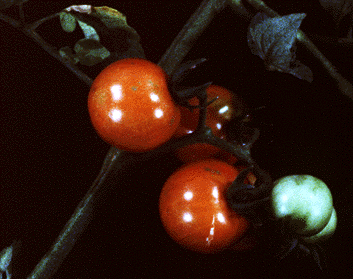
Fertilization is an important and exciting event in the life of the tomato plant. Many processes are involved in this beautiful event. To learn more about these processes scroll downward. The text corresponds to the adjacent picture.
|
|
| Fertilization takes place in the reproductive organs of the flower. The female organs,comprised of stigma, style, and ovary, collectively are called the pistil. The male organs consist of the anther and filament and are collectively called the stamen. | 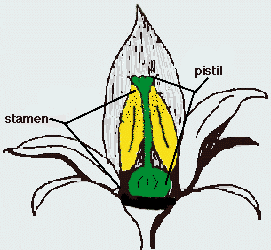 |
 |
The tomato flowers of most commercial cultivars are self pollenating (Ho and Hewitt 1986). The pollen from the anther is transferred to the stigma of the same flower. Tomato flowers will be cross pollenated occasionally. When this occurs the pollenator is usually the bumble bee (Hayward 1938). |
| Once the pollen grain has landed on the stigma the tube cell of the pollen grain elongates to form a tube. This tube reaches down the style all the way to one of the ovules in the ovary of the flower. Once the tube is formed the pollen grain's two sperm cells then travel down the tube into the embryo sac inside the ovule.(Campbell,1993) | 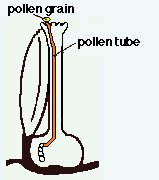 |
| The ovule is fertilized through a process called double fertilization. It produces a diploid zygote and a triploid endosperm. The endosperm will store food for the embryo.(Campbell, 1993) The fertilized ovule will become one of the seeds of the tomato fruit. The seed contains the embryo and the endosperm and is covered by a strong seed coat, called the testa. The testa is unique to tomatoes. The seed forms a thick outer epidermal layer. These cells partially break down; the "hairs" are what is left behind. These "hairs" collect a gelatinous material which gives the seeds a gooey membrane. This process forms the testa(Hayward 1938). The parts of the embryo are as follows: the shoot apex, two cotyledons (tomato is dicot), the hypocotyl and the root apex.(Ho, Hewitt, 1986) | 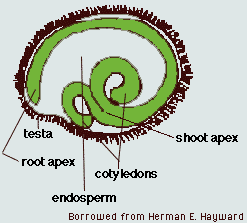 |
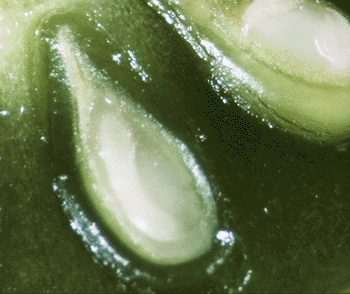 Tomato seed |
 Tomato embryo |
Introduction | Flowers&Fruit | Roots | Stems | Leaves
Section of Plant Biology Division of Biological Sciences
UNIVERSITY OF CALIFORNIA, DAVIS